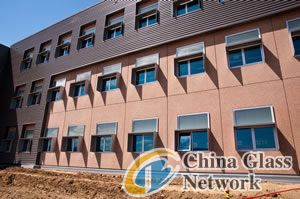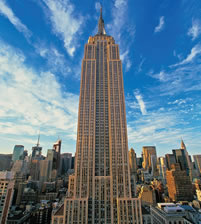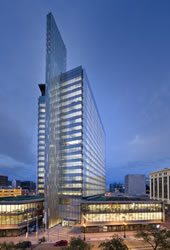Post Time:Nov 17,2010Classify:Industry NewsView:612
USGlass Magazine has announced the winners of its 2010 Green Design Awards.
The winners are:
Active Glazing Category - National Renewable Energy Laboratory's Research Support Facility in Golden, Colo.;
Retrofit Category - Empire State Building in New York; and
New Construction Category - Manitoba Hydro Place in Winnipeg, Manitoba, Canada.
 Active Glazing Category
Active Glazing Category
The National Renewable Energy Laboratory's Research Support Facility in Golden, Colo., was created to be one of the most energy-efficient and healthy workplaces in the world. RNL in Denver designed the net-zero energy building to produce as much power as it consumes. J.R. Butler Inc. in Denver served as the glazing contractor for the project. At least eight different glass types were specified, including electrochromic glazing from SAGE Electrochromics and triple-pane insulating glass units from Viracon. Some of the 600 high-performance windows provided by Wausau Window and Wall Systems also feature between-glass "light louvers" to push light deeper into the interior. Every workstation has 100 percent daylighting, controlled by tintable glazing in some cases and custom, exterior "bonnet" sunshades in others. At night, the building's climate sensors automatically open the clerestory windows to purge unwanted heat from the building, naturally cooling it for the next business day.
 Retrofit Category
Retrofit Category
The window upgrade at the Empire State Building in New York was one part of an integrated project that is expected to reduce energy use by 38 percent and save $4.4 million per year in energy costs. Unique to this project, all 6,500 windows in the building was re-used rather than removed and replaced with new glass. Serious Materials set up an approximately 5,000-square-foot production facility on the fifth floor of the Empire State Building to do this. As the original insulating glass was removed from each window frame each night, it was taken to the production facility where workers would unseal the insulating glass and clean both pieces of glass. Next, workers would assemble inside the original uncoated insulating glass a coated film from Southwall Technologies Inc. The insulating performance of the updated IGUs increased the R-value from about R-2 to between R-5 and R-8, depending on the location/orientation of the window, while also reducing the solar heat gain by 50 percent. The original thermally broken aluminum frames were updated with new weather-stripping and hardware to improve the overall infiltration rates. Finally, each unit was resealed, and the "new" IGU was put back in the original window frames.
New Construction Category
Manitoba Hydro Place in Winnipeg, Manitoba, integrates a variety of sustainable technologies to create a "living building" that dynamically responds to the local climate. A biodynamic double façade is the building's pubic face and also one of its most vital sustainable components. Kuwabara Payne McKenna Blumberg Architect in Toronto and Smith Carter Architects and Engineers in Winnipeg designed the building, while Fergson Neudorf Glass Inc. in St. Catharines, Ontario, and Border Glass and Aluminum in Winnipeg served as the glazing contractors. The building's double façade curtainwall system is comprised of an insulating glass outer wall with a monolithic inner wall, separated by a three-foot buffer zone. A low-iron glass substrate, provided by PPG Industries, with Viracon's VE-85 coating offers both high light transmission and powerful solar energy control, with a visible light transmittance of 80 percent that allows daylight to penetrate the floor-to-ceiling glazing and reach deep into the building's core. Its low U-values reduce radiant heat transfer and improve the building's overall energy performance. Automated exterior wall vents in the outer curtainwall (controlled by the building management system) allow fresh air into the building, year-round. Manually operated windows on the interior curtainwall allow employees to control their individual environment, which studies have shown enhances employee well-being and productivity while reducing absenteeism.
About the Judges

Readers of the USGNN.com™ newsletter nominated projects for this year's awards. This year's judges included Benedict Tranel, architect and regional technical director at Gensler in San Francisco; Kerry Haglund, LEED AP, senior research fellow with the Center for Sustainable Building Research at the University of Minnesota; and Gregory A. Demirdjian, LEED AP BD+C, with glazing contractor MTH Industries in Chicago. In selecting the buildings they felt best conveyed how glazing can contribute to a building's overall "greenness," the judges considered a variety of factors. Information was provided by the nominees, including building certifications; glass type; framing type; the glazing products' integration with other building components; the glass choice's contributions to cost savings; "green" production and/or installation processes; and other information that are unique to each building.
Source: http://www.usgnn.com/newsawards20101116.htmAuthor: shangyi